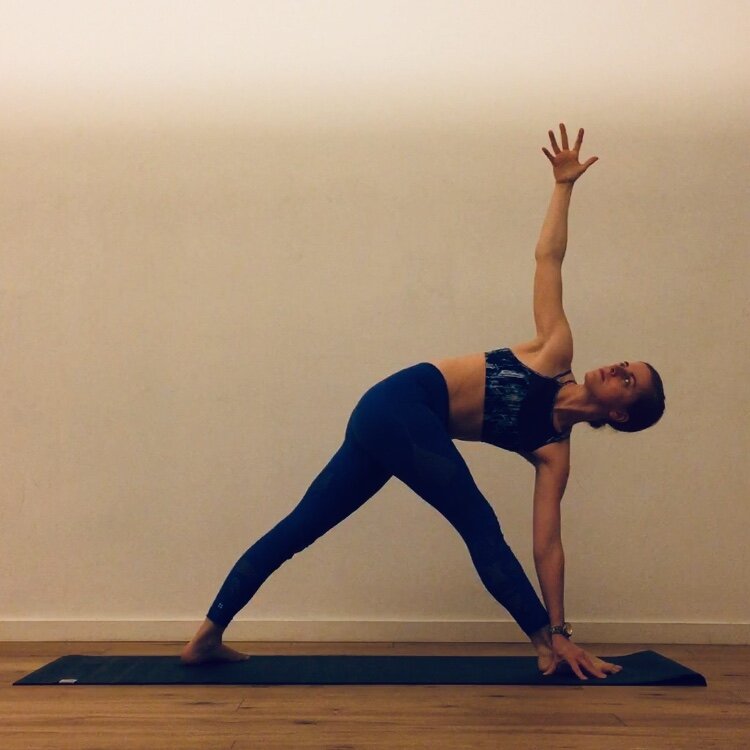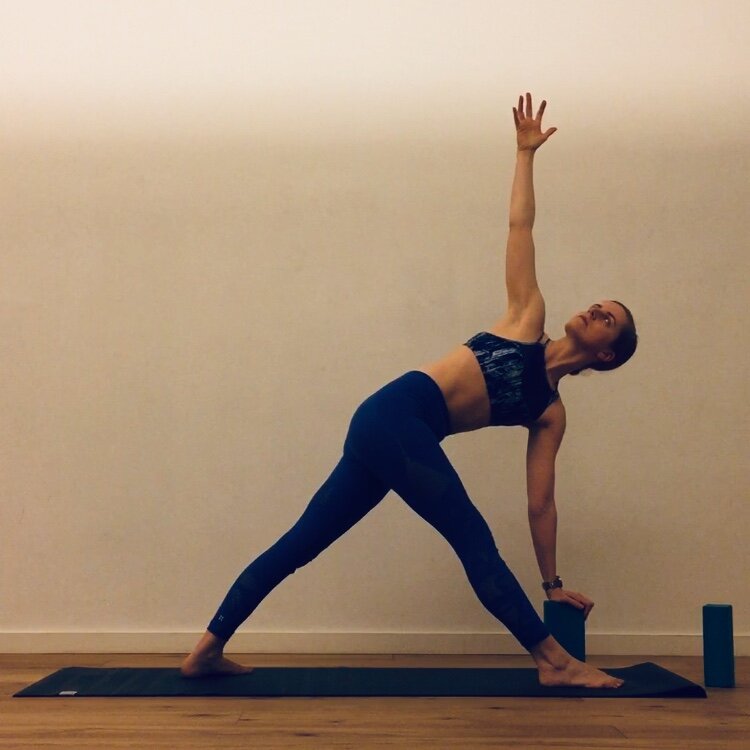Yoga for core strength and awareness part 2: your sides (side bends)
Olivia Marley
Within our current class theme of ‘core’, this week we’re shifting our attention to your sides (look at our last post for a simple diagram of your core). As with last (and every!) week, our primary focus is on breathing plus also trying to feel the muscles in the sides of your waist working. For this week of study we’re looking primarily at how the some of the muscles in your core can make you bend to the side, and feeling how your outer hips also have a role to play in that motion.
Here are some of the postures we’re using to feel those tissues working:
Side ribs breathing: lie on your back with your knees bent. Put your hands on the sides of your lower ribs, so that your fingers are towards to the ceiling but your thumbs are wrapped around towards the floor. As you inhale try and breathe out into your hands, so that your ribcage pushes your hands further apart. As you exhale feel your ribs and hands sink back towards each other. Repeat.
Side waist strengthener: lie on your back with your knees bent. Lift your head and shoulders and reach your hands towards your ankles. Feel the front side of your core working to lift your head and shoulders. Take an inhale, then as you exhale reach your right hand towards the front of your mat (to bring yourself into a sideways bend). Inhale come back to centre, exhale reach to the other side. Repeat a few times, concentrating on feeling the side of your waist shortening to make your torso bend sideways as you reach your arm.
Lounge lizard to modified side plank: I’m not sure if the posture in the first of these images has a common name (but I call it lounge lizard!). Notice how both my feet are pointing in the same direction, which would be parallel with the short edge of my mat if I was using one. I’m also not sitting on the floor, my hips are hovering and I’m feeling a stretch along the outside of my bottom hip and in that side of my waist and ribs. Inhale into the bottom side of your torso, then as you exhale keep your feet as they are and push up into the version of side plank show in the next image. For extra length in the top side of your body you can reach your arm alongside your ear like. Move between these two postures a few times, in time with slow steady breathing.
Side plank: you can see here I’m lifting my hips a little higher than they would be if my body was in a perfectly straight line. I like doing that because it feels like it works the side of my waist and outer hip more to lift me higher. Make sure your bottom shoulder stays happy by shrugging it down your back away from your ear.
Again I’m not sure if this posture has a name - I’ve heard it called bananasana 🍌. Whatever it’s called, this is a nice gentle way to stretch out all the tissues in the sides of your body .












